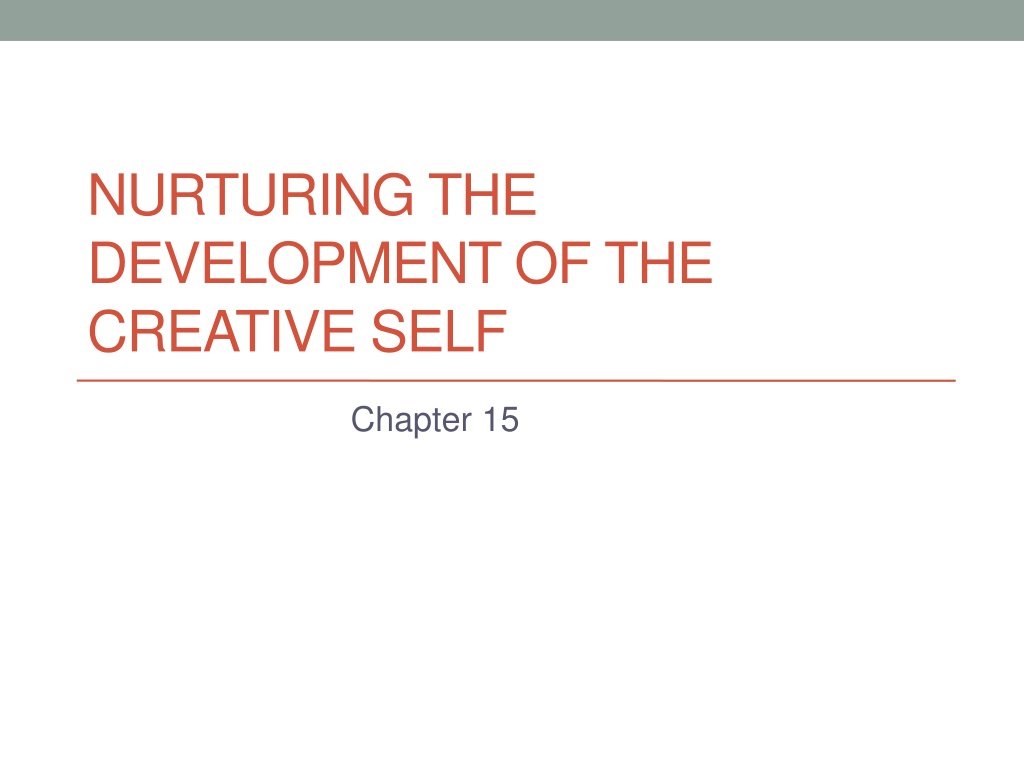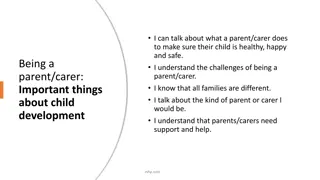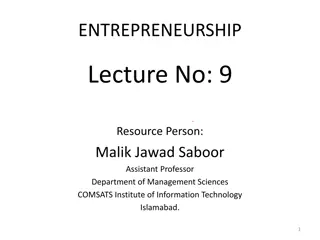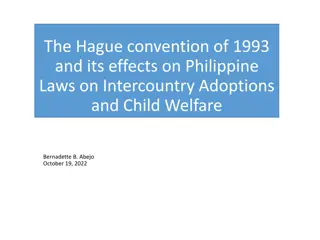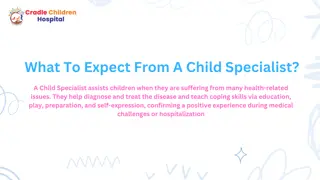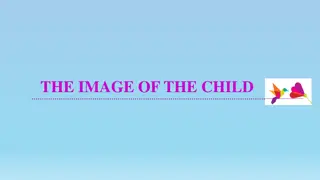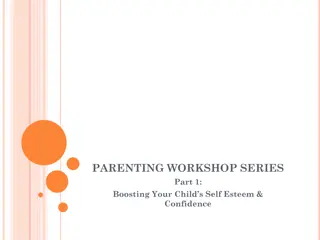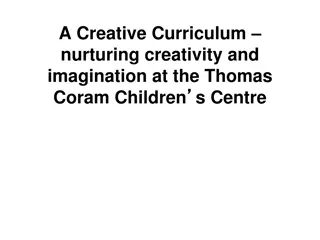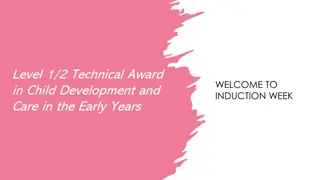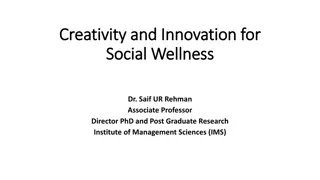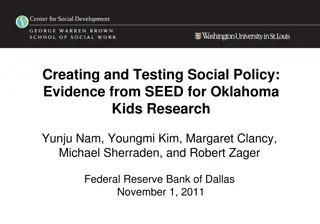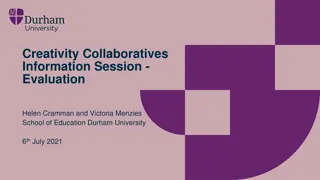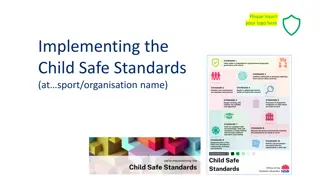Understanding Creativity in Child Development
Creativity is a vital aspect in a child's cognitive growth, involving imagination, generation of new ideas, and exploration. This chapter delves into the components of creativity, how it supports emotional, social, and physical development in children, and ways teachers can nurture and encourage creative expression in various forms.
Download Presentation

Please find below an Image/Link to download the presentation.
The content on the website is provided AS IS for your information and personal use only. It may not be sold, licensed, or shared on other websites without obtaining consent from the author. Download presentation by click this link. If you encounter any issues during the download, it is possible that the publisher has removed the file from their server.
E N D
Presentation Transcript
NURTURING THE DEVELOPMENT OF THE CREATIVE SELF Chapter 15
What is Creativity? A way of thinking and processing the world rather than the production of art projects Creativity plays a significant role in the cognitive development Creative thinking involves imagination, the production of new ideas and testing them Creativity focuses on the process of forming original ideas through exploration and discovery The process what is most important, not the product Children s creative expressions can be seen in drawings, painting, singing, dancing, building with blocks, dramatic play, and so forth
Four Essential Components of the Creative Process (Paul Torrance) 1. Fluency the ability to produce a number of different ideas 2. Flexibility the ability to approach situations and develop solutions from a number of different perspectives 3. Originality the ability to have a new or novel idea 4. Elaboration the ability to extend ideas The Torrance tests of creativity thinking (TTCT) are the most widely used tests to measure children s creativity since 1960s
Creativity Support Emotional Development Help children express their emotions Helps develop multiple intelligences How teachers can help encourage children to express their feelings, I hear that you are angry right now. Why don t you paint a picture of what that feels like?
Creativity Supports Social Development Singing, painting, dancing, playing make-believe are all much more fun when done with friends. Children learn to pay attention to others as well as the rules of social give- and-take How teachers can help encouraging children to pair up or work in small groups and discuss their ideas with others. Displaying children work on the wall and let the children critique the work in a constructive way
Creativity Supports Physical Development Creativity develops fine-motor skills (cutting, drawing, tearing and eye-hand coordination) Creativity develops large-motor skills (movement, dance activities) The bodily-kinesthetic intelligence involves handling tools and objects skillfully
Creativity Support Language and Literacy Development Combine verbal storytelling with artistic creation taking dictation while the child is painting/drawing or creates out of clay/playdough, using puppets to retell the stories Encourage Children to work together, and language will flow Incorporate listening and music activities - offer musical instruments to experiment with and listen to. Ask them to talk about their favorite sounds that them make Ask open-ended questions about the child s creative work ( how do you make green?) Offer tools and materials to develop eye-hand coordination cutting, drawing/writing
Creativity Supports Cognitive Development Creativity enhances mathematics learning measuring with rulers in their woodworking, counting people they drew, grouping and classifying as they build with blocks/legos Creativity enhances science learning hypothesis forming and testing (making something from clay). Children discover physical properties of objects How teachers can help respecting children s ideas and valuing their divergent thinking
The Stages of Development in Childrens Creativity Exploration of materials 2s and 3s explore paint and brushes using their senses before creating something Nonrepresentational stage paintings have more design and intention, but not recognizable by anyone but the painter Representational stage children plan what they are going to paint (ages 4-6) and their work can be recognizable
What Can Teachers Do to Nurture Children s Creativity Allow countless opportunities for creative experiences and exploration Focus on process, not product Use lots of self-expressive materials to foster the creative self Remember to make self-expressive opportunities available for children with disabilities Provide enough materials Foster an appreciation of beauty display children s work around the classroom
